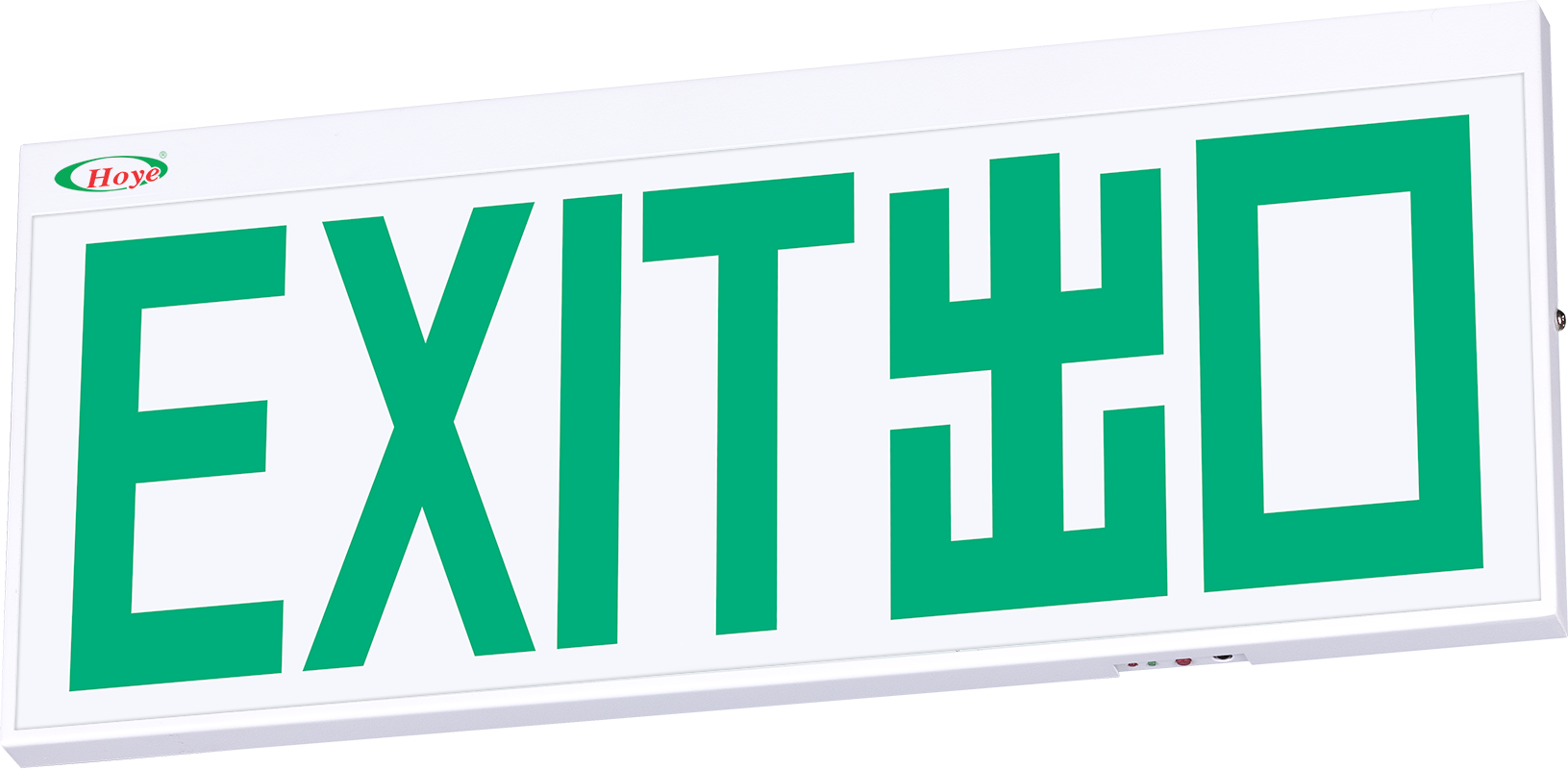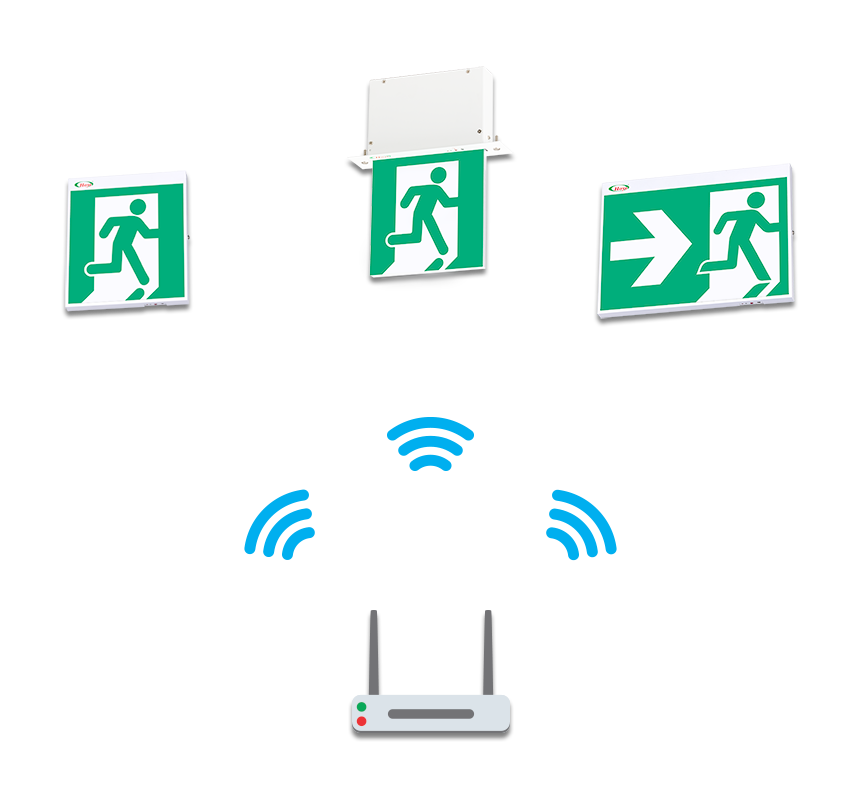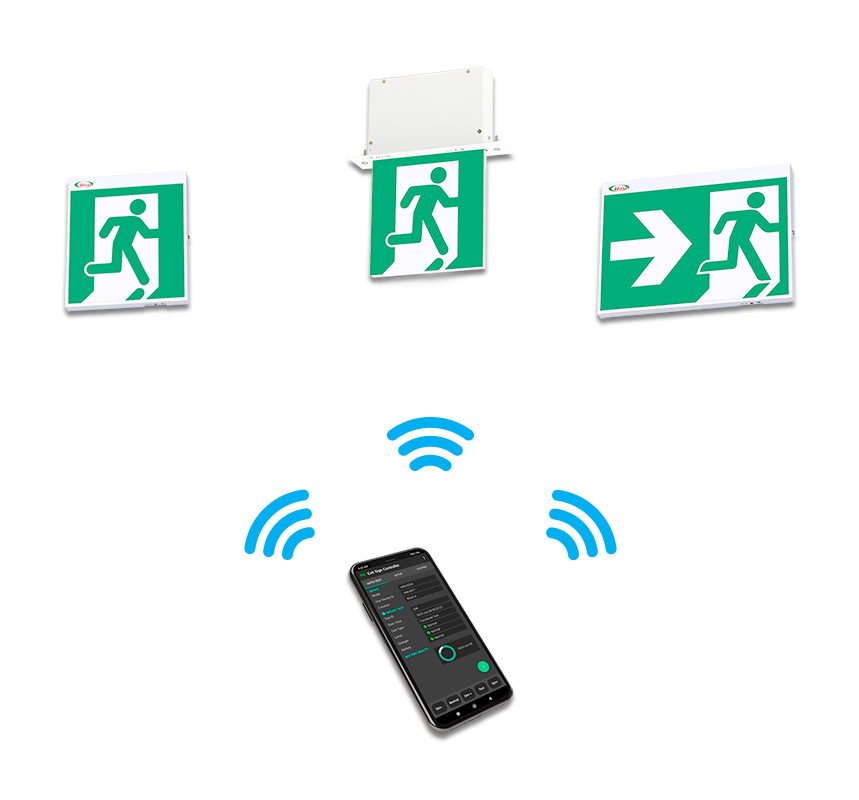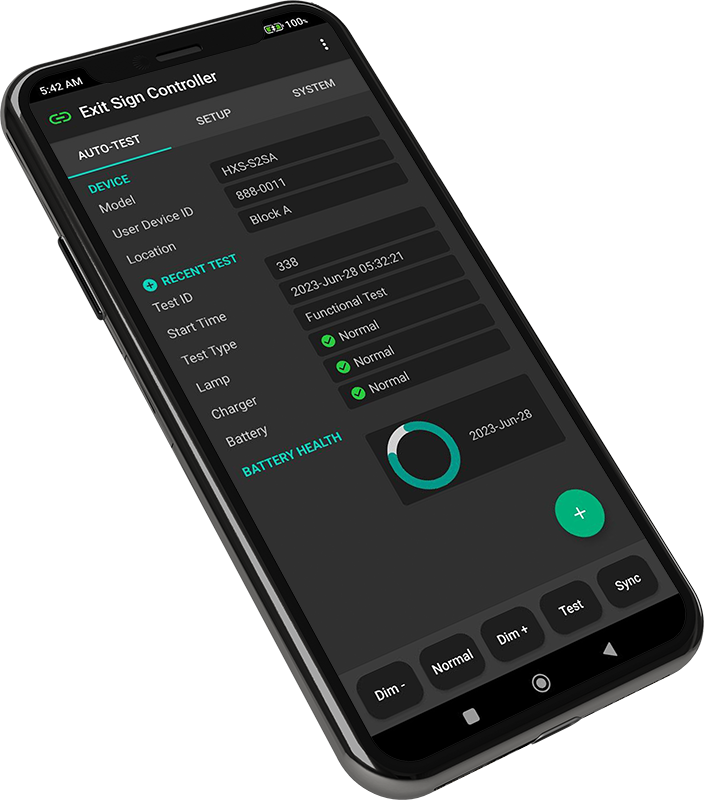HXW Slim Series – Pictogram LED Exit Sign
IEC-62034 Automatic Test with WiFi support
![]()
Features
- IEC 62034 automatic test system for HK FSD requirements in 2021
- Upload test results to cloud via WiFi
- App support for device set up and inspect test results
- Dual backups for test results, local non-volatile memory and cloud
- Built-in real time clock with coin battery
- Slim design with 4mm bezel and 18mm thickness
- Nichia LEDs with 150K hours life at L70
- System power is only 2W
- Full solid-state design without mechanical part
- Constant brightness control for both AC and DC operations
- Support lamp flashing with fire alarm input
- Deep-discharge shutdown for battery protection
- Isolated low voltage test switch
- 3 charging modes: 6-hour charging, pulse charging, battery recovery charging
- Infrared remote control for self-test and system set up
Electrical Characteristics
| Rated supply voltage | 220-240 VAC (-20%, +10%) |
| Supply frequency | 50-60 Hz |
| Circuit power | 2.0W max |
| Changeover time | <0.1 sec |
| Recharge time | <6 hrs |
| Rated discharge time | 3 hrs |
| Lumen Maintenance (L70) | >150K Hrs |
| Ambient temperature (ta) | 0 ... +50°C |
| Max. temperature rise (Δt) | <5°C |
| Battery type | NiCd, NiMH |
| Luminance | 250 cd/㎡ max |
IEC 62034 Automatic Test
According to HK FSD, Technical Guidance May 2021 and FSD Circular Letter No. 5/2021, PPA/104(A), 5th Revision, emergency lighting with self-contained batteries shall be inspected periodically. For automatic testing devices, it shall be designed in accordance with IEC 62034:2012 - Automatic test systems for battery powered emergency escape lighting.
Our test system will start automatically after mains supply is not interrupted for 5 days. After a random delay days for different device, a commissioning test is started. This avoids adjacent devices testings at the same time. Monthly functional tests and annually duration test will then be repeated.
The firmware supports full IEC 62034 - ATS Type S, including the following tasks:
![]()
| IEC 62034/BS EN 50172/FSD Requirements | Automatic Test |
| Commissioning Testing | ✅ |
| Maintenance | |
|
a. Once every month a functional test in accordance with BS EN 50172 not longer than 10% of rated duration should be carried out. |
✅ 60 sec |
|
b. Once every twelve months a full rated duration test, should be carried out and the results should be entered in a register. |
✅ |
|
c. The luminaire should be functioning properly to maintain the stipulated lighting level and the normal power supply should be restored after the test. |
✅ |
|
d. If automatic testing devices are used, the above item a – c should be complied with. |
✅ |
Functional and Duration Tests
Functional and duration tests are two types of tests performed to ensure exit sign functionality and reliability.
- Functional test is performed once a month to check the basic functionality. The test also checks the hardware parameters, such as various voltage and current. The test duration is 60 seconds.
- Duration tests are performed once a year. The tests is the same as functional test but with additional battery life check with a full rated battery discharge.
- Commissioning test are the first duration tests. They are typically performed after the device has been installed and configured.
| Test Performed | Functional Test |
Duration Test |
|
1. System Changeover |
✅ | ✅ |
|
2. Lamp voltage |
✅ | ✅ |
|
3. Lamp current |
✅ | ✅ |
|
4. RTC battery voltage |
✅ | ✅ |
|
5. Battery charging voltage |
✅ | ✅ |
|
6. Battery charging current |
✅ | ✅ |
|
7. Battery discharging voltage |
✅ | ✅ |
|
8. Battery discharge time |
✅ |
Automatic Test Flowchart
Network Configurations
1. Configuration with WiFi
-
- Automatic upload test results to cloud
- Automatic monthly monitoring and logging
- Automatic test results reporting
- Test results can be requested via app
2. Configuration without WiFi
-
- Test results can be requested via app
- Use mobile phone hotspot to sync test results
- View test results and system status on app
App support
An Android app is available to simplify set up and maintenance. It helps
- Set up new devices
- Sync test results to cloud
- Check test results and real time status
- Use as Hoye IR remote controller
* An Android phone with an IR blaster is recommended. If not, a Hoye IR remote controller has to be used with the app.

Real Time Clock
- The system has a coin battery powered real time clock (RTC)
- The battery can last more than 10 years
- The RTC provides accurate time and calendar for system and automatic test schedule
- RTC is automatically calibrated with internet time
Records of Test Results
To ensure high reliability, all test results are saved in two sets of data backups:
- Internal flash memory: This can store up to 20 years of data.
- Cloud storage: The number of test results that can be stored in the cloud is virtually unlimited.
After an automatic test, the test result is saved to internal flash memory immediately. If a Wi-Fi connection is available, the data is also uploaded to the cloud.

Years Warranty
Hours of LED Life
Watt
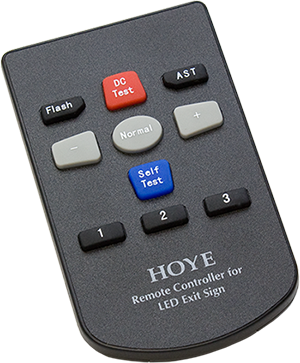
IR Remote Control
The infrared remote control makes maintenance easier than ever. It can be used to set the LED exit sign system settings and self-test functions.
-
Panel brightness dimming control in normal operation
-
Flashing model in emergency mode
-
System changeover test (simulate traditional test button)
-
On-demand self-test
Status Indications
Two LED indicators provide a rich set of status indications for system status and faults. Operators can use the information to quickly identify and diagnose problems.
Normal Status
-
Charging
-
Battery charged
-
Functional test pending
-
Duration test pending
Fault Status
- Battery fault
- Lamp fault
- Charger fault
Compliances
FSD Circular Letter No. 5/2021 Fire Safety Requirements for Emergency Lighting Systems in Licensed/Registered Premises
IEC 62034:2012 Automatic test systems for battery powered emergency escape lighting
BS 5266-1:2016 Emergency lighting – Code of practice for the emergency lighting of premises
BS EN 1838:2013 Lighting applications. Emergency lighting
EN 61347-2-13 Lamp controlgear. Particular requirements for d.c. or a.c. supplied electronic controlgear for LED modules
EN 62384 DC or AC supplied electronic control gear for LED modules. Performance requirements
EN 60598-1 Luminaires. General requirements and tests
EN 60598-2-22 Luminaires. Particular requirements. Luminaires for emergency lighting
EN 55015 Limits and methods of measurement of radio disturbance characteristics of electrical lighting and similar equipment
EN 61000-3-2 Electromagnetic compatibility (EMC). Limits. Limits for harmonic current emissions (equipment input current ≤ 16 A per phase)
EN 61000-3-3 Electromagnetic compatibility (EMC). Limits. Limitation of voltage changes, voltage fluctuations and flicker in public low-voltage supply systems, for equipment with rated current ≤ 16 A per phase and not subject to conditional connection
EN 61547 Equipment for general lighting purposes. EMC immunity requirements
Dimensions
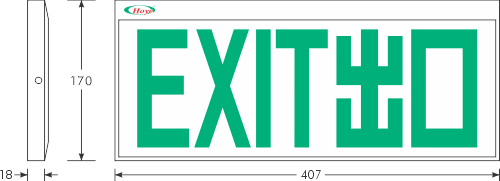
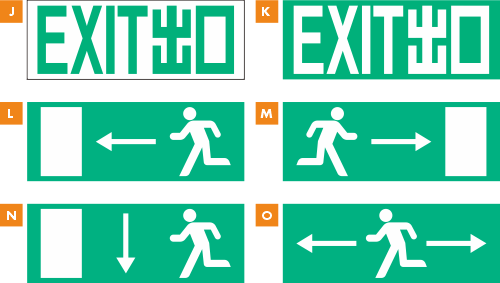
Emergency Exit Legends
Ordering Information
| Model | Width (mm) | Legend | Illuminated Side |
|---|---|---|---|
| HXW-W4SJ | 400 | J | Single |
| HXW-W4SK | 400 | K | Single |
| HXW-W4SL | 400 | L | Single |
| HXW-W4SM | 400 | M | Single |
| HXW-W4SN | 400 | N | Single |
| HXW-W4SO | 400 | O | Single |

